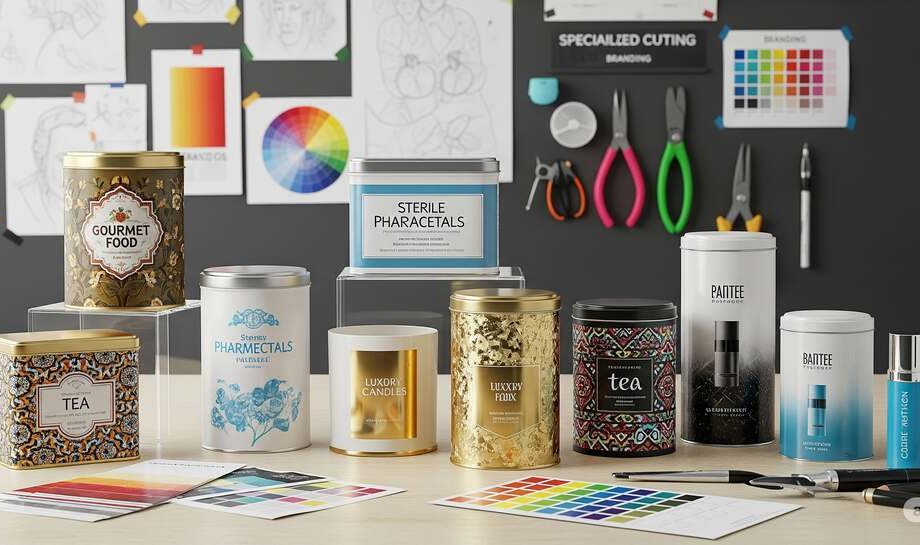Tin containers are used in many industries for packaging goods. These containers are chosen for their durability and classic appeal. Products are kept safe, fresh, and presentable when stored in tins. A brand’s image can also be improved with custom tin designs.
Customization is needed to meet the demands of each industry. Unique features must be added based on product type. Better appeal and function can be achieved through proper customization.
These expert and useful tips below by one of the best tin containers manufacturers can help improve tin packaging for many uses.
Understand the Industry Requirements First
Every industry has its own packaging rules and needs. These must be studied before the design is started. Wrong designs can cause issues for product safety.
Packaging standards are set by industry experts and bodies. These rules are made to ensure safety and quality. They must always be followed without any error.
Food, cosmetic, and chemical products are packaged differently. Special features are often required by each product type.
Choose the Right Tin Size and Shape
The correct size must be chosen for each product. A poor fit can lead to damage or waste. Space must be used in the best way.
Different shapes can be used for brand identity. Round, square, or custom shapes are often selected. Unique designs can help products get noticed faster.
Shipping and storage needs must be considered too. Stackable tins are often preferred by many businesses.
Use Food-Grade Coatings for Edible Products
Food items must be stored in safe tin containers. Inner surfaces should be coated with food-safe material. Direct contact with metal must be avoided completely.
Food-grade coatings are approved by safety authorities. These coatings stop any reaction with the food inside. Taste and quality are also better protected this way.
Without coating, tins can cause contamination or spoilage. Proper protection must always be given to edible goods.
Add Child-Resistant Features for Health Products
Health products must be packed with extra safety measures. Child-resistant features are often required by safety laws. These features help prevent accidental use by children.
Special caps or locks can be added to tins. These designs make opening difficult for young children. Still, adults can use them without problems.
Packaging must be tested for child safety before use. Extra care should always be taken with health products.
Apply High-Quality Printing and Labeling
Clear printing must be used on all tin containers. Brand names and product details should be shown properly. Labels must be easy to read and understand.
Strong inks and coatings should be used for printing. Fading and scratches must be avoided during handling. Long-lasting labels help maintain product quality and trust.
Designs should follow brand colors and styles. A clean and attractive look must be given always.
Consider Reusability and Eco-Friendly Materials
Eco-friendly materials should be chosen for tin containers. Metals that can be recycled are often preferred today. Less waste is created when such materials are used.
Tins should be designed for reuse after first use. They can be kept for storage or home decoration. A longer life adds more value to the container.
A green image is built through smart material choices. Customers are attracted to brands that support sustainability.
Include Custom Inserts for Better Product Fit
Custom inserts should be placed inside tin containers. Foam, plastic, or cardboard inserts are often used inside. These helps keep the product safe and in place.
Shaking and movement can be reduced by using inserts. Extra protection is given during transport and handling. The product stays in good condition until use.
Inserts also give a neat and organized look. A better unboxing experience can be provided to customers.
Use Embossing and Debossing for Brand Appeal
Embossing and debossing are used to create raised designs. A premium look can be given to tin containers. Brand names and logos are made to stand out.
These effects can be felt by touch and seen clearly. A better impression is created for high-end products. Customers remember the brand through unique textures.
Extra value is added without using too much space. Branding is improved with simple yet strong details.
Design for Easy Stackability and Storage
Tins should be designed with flat tops and bottoms. Stackability can be improved through careful design choices. Less space is used during storage and shipping.
Retail shelves are better organized with stackable tins. Products are displayed neatly and attractively in stores. Handling becomes easier for both sellers and buyers.
Accidents can be reduced by preventing tins from slipping. A stable design adds both safety and convenience.
Follow Legal and Safety Labeling Rules
Labeling rules must be followed for every tin container by the best food tin container manufacturers. Different industries have different safety and legal needs. These rules are set by government and safety bodies.
Important details must be shown clearly on the label. Warnings, ingredients, and usage must be included if needed. The product must be approved before it is sold.
Legal problems can be avoided by using correct labels. Customer trust is also improved with proper information.
 :
https://in.pinterest.com/theglistentins/
:
https://in.pinterest.com/theglistentins/

